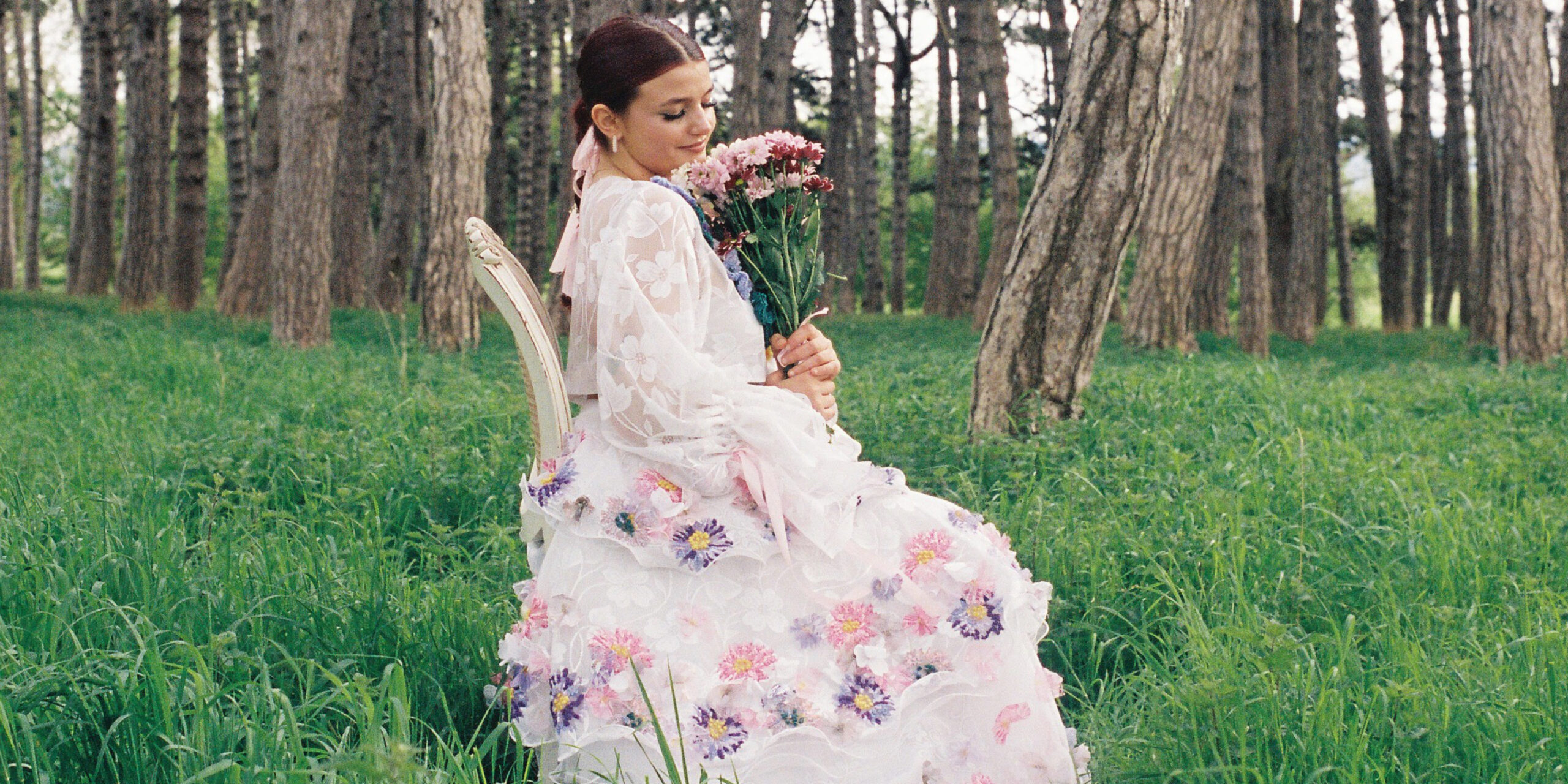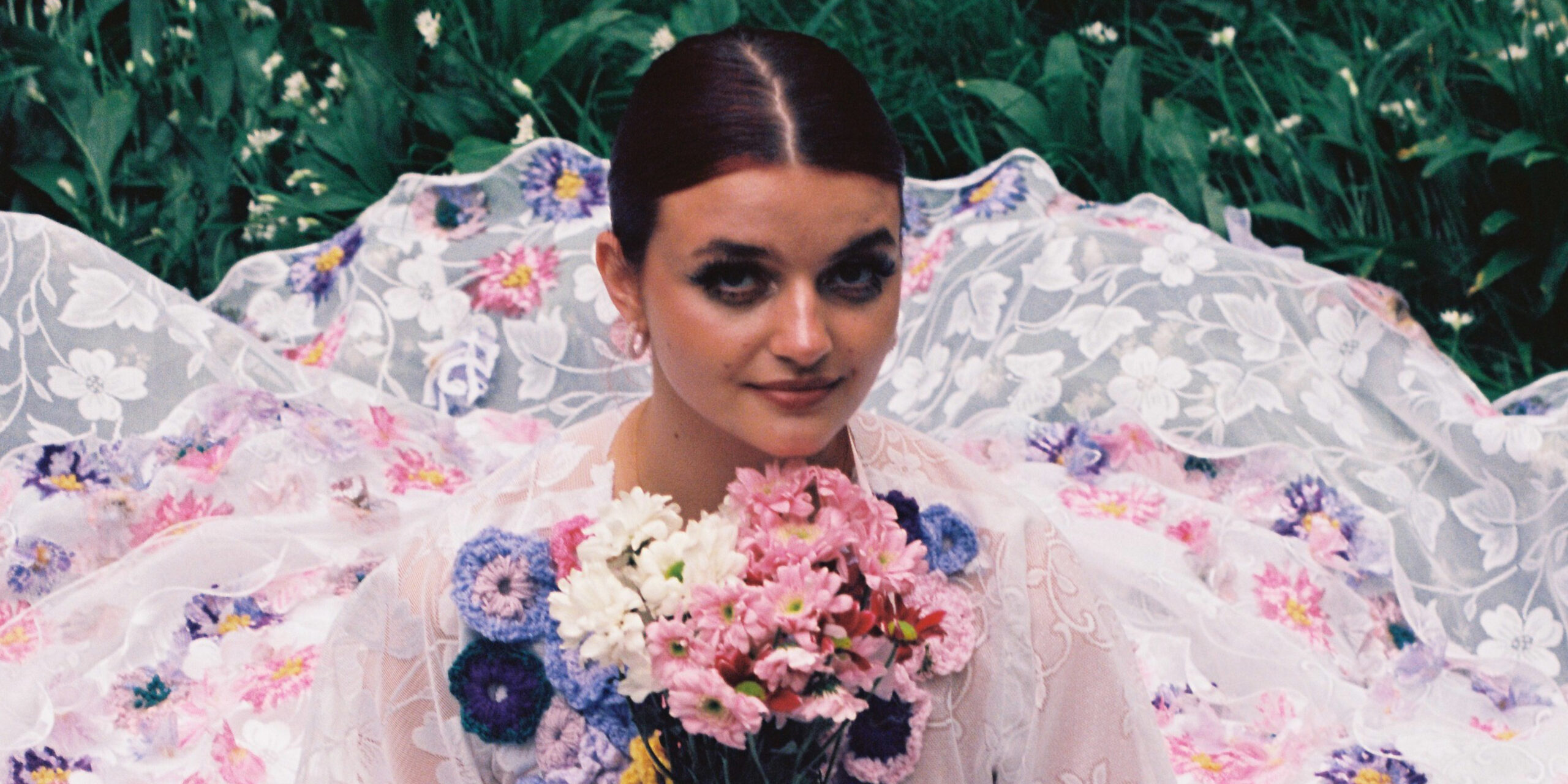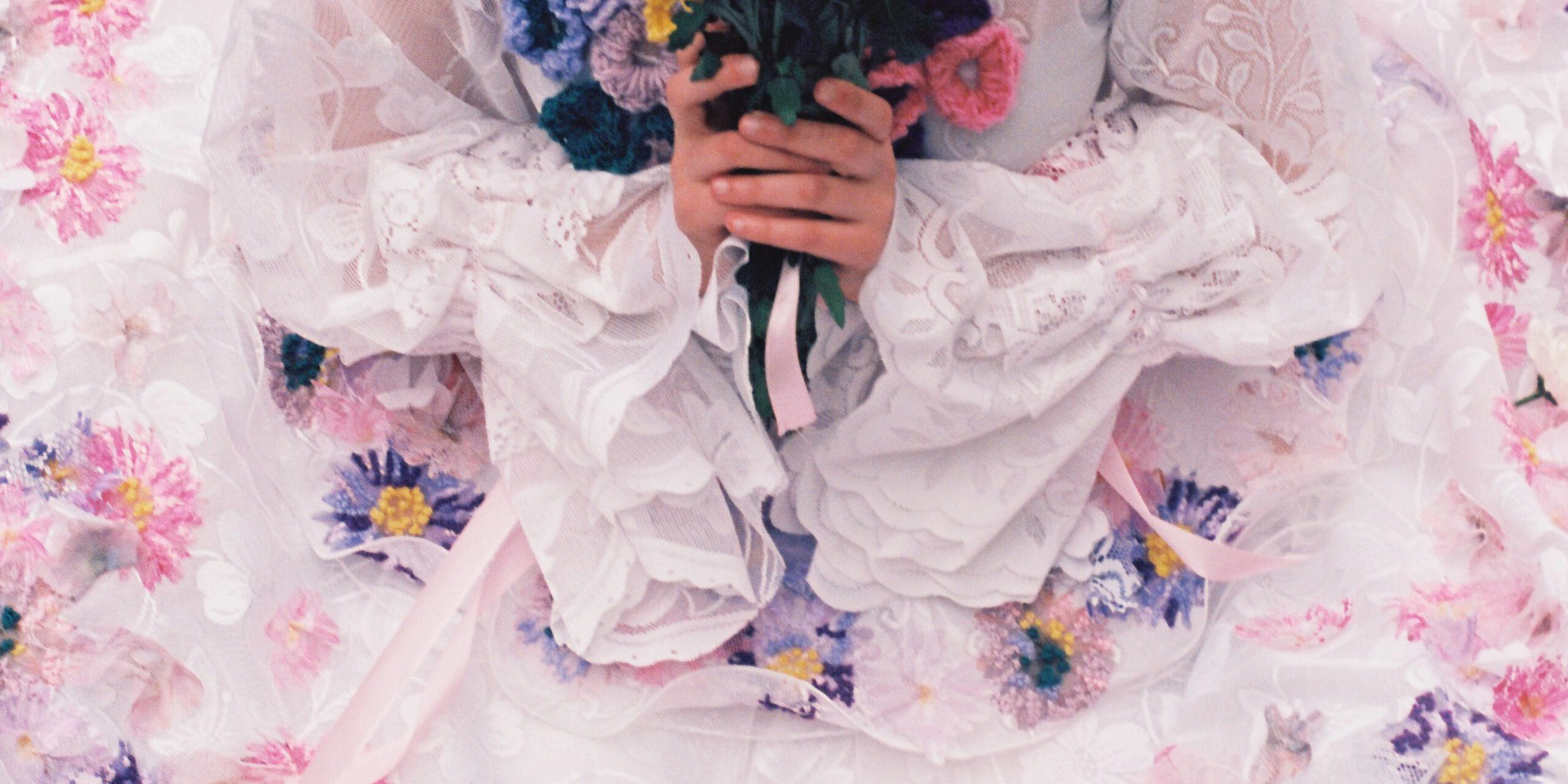Properties & Qualities
Application
Clothing Art
Qualities
Colourful
Colour
Green Pink Violet White Yellow
Sample Information
Date of creation
6th of May 2023
Dimensions
Bodice: Pattern Block Size 10, Skirt: waist 32” Circle Skirt Length: 106cm Each Skirt Tier: 26.5 cm
Culture & Context
‘Daca as fi Primăvară’ (If I were Spring) is a line taken from a poem that I felt best represented my final year work.
For my final year, I wanted to create something that paid homage to and celebrated traditional Moldovan textiles and craft. What inspired me to pursue this was my grandmother’s hand embroidered table cloths and woven wall carpets. A lot of Moldovan textile objects feature stylised motifs that are inspired by nature. From what I have researched these motifs represented the creator or the wearer of that object, it reflected their connection with their environment; it represented the people of Moldova and acted as a language to narrate their stories. Traditional Moldovan clothing specifically acted as a canvas to portray this visual language.
I wanted to create a traditional costume of my own to celebrate and bring light to Moldovan culture and traditional craft and to also show my own appreciation for my heritage through my contemporary perspective. I took aspects of what makes me feel connected to my roots such as my grandparent’s home (from my dad’s side of the family), my grandmother’s garden (from my mam’s side of the family), and my grandmother’s embroidery. Being born in Ireland I also wanted to add a decorative element that celebrates that part of my identity.
Pursuing a degree in textiles and basing my research on traditional Moldovan craft has helped me reconnect to my roots more than ever.
Moldova has such a rich and beautiful culture that I feel should be admired and celebrated more.
Process & Production
I looked at traditional Moldovan national dress for inspiration for the construction of the garment. I also looked at botanical forms for the construction, especially for the making of the circle skirt. The embroidery was the most important aspect of the garment in order to narrate the story I wanted to tell. I took the idea of using stylized floral symbols to create a motif and looked at flowers from my grandmother’s garden. I decided to do this as my grandmother’s garden has a special place in my mother’s heart, and from looking at my grandmother’s embroidery, it is obvious her inspiration came from her garden. I used a heat press to transfer the images of the flowers that I printed on Teflon paper onto the fabric. From then on, I used traditional embroidery techniques featured in Moldovan embroidery, such as cross stitch, to embroider on top of the heat-pressed motifs. I did this to incorporate a contemporary aspect into the garment. As this garment is a celebration of my identity and connection to my heritage, I crocheted flowers onto the bodice of the garment as an element to include my Irish heritage.
Recipe Details
Constructed the garment from polyester curtain voile. Used polyester embroidery thread to embroider onto the garment. Crocheted the flowers featured on the bodice from acrylic wool.
Credits
Craft Maker
Anna Maria Deliu
Library Contributor
National College of Art & Design Ireland
Photographer
Fiona Louise Ntidendereza













